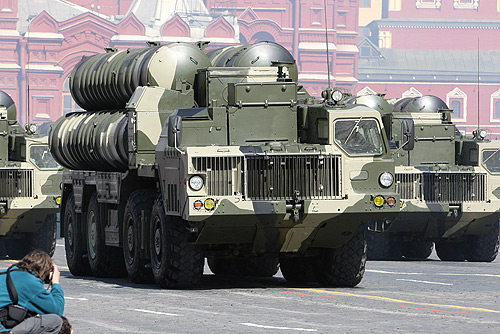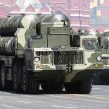
Russian Air Defense Weakness: Modernizing or Optimizing?
Publication: Eurasia Daily Monitor Volume: 7 Issue: 139
By:

Viktor Ozerov, the Chairman of the Defense Committee of the Russian Federation Council, suggested during the recent operational-strategic exercise, Vostok 2010, that the key task is to provide the armed forces with “advanced weapons and military hardware.” Ozerov claimed that the first stage in Defense Minister, Anatoliy Serdyukov’s, reform has been completed, namely the creation of “100 percent permanent readiness units, as well as “the first steps to equip them with new state-of-the-art weapons and military hardware. Now we need to make sure that this new structure functions effectively” (Interfax, July 7).
While such claims are increasingly commonplace, as authorities shore up support for the defense reform, the challenge presented by re-equipping the armed forces remains underestimated at the very highest levels of government. This is illustrated by problems linked to the unified system of state identification used by the Russian armed forces and security structures: the radar beacon transponders of the Parol (password) system (Yedinaya Systema Gosudarstvennogo Radiolokatsionnogo Opoznavaniya –YeSGRLO). This also applies to the CIS member countries that signed the 1992 Minsk Agreement (Armenia, Belarus, Kazakhstan, Kyrgyzstan, Tajikistan, Turkmenistan, Uzbekistan, Ukraine and Russia). It is the Russian equivalent of the Mk XII Identification, Friend or Foe (IFF) system used by the US and NATO. Its characteristics and need for development have been actively assessed in the Russian military press (Vozdushno Kosmicheskaya Oborona No. 1, 2007, No. 3, 2009).
IFF issues were brought sharply into focus in the aftermath of the Russia-Georgia war in August 2008, as the Russian military assessed operational lessons drawn from the conflict. A notable element, based on the mutual absence of identification equipment, witnessed Russian air force ground attack aviation using onboard armaments against Russian columns, and consequently, air defense subunits in the ground forces and airborne troops fired on their own aviation. As one Russian military analyst laconically observed: “Unintentional firing of surface to air missiles (SAM’s) on one’s own military assets strongly affects the morale and psychological status of personnel” (Vozdushno Kosmicheskaya Oborona, December 5, 2009; Nezavisimoye Voyennoye Obozreniye, September 19, 2008). Moreover, Osa-AKM combat vehicles and Buk-M1 self-propelled air defense systems captured by Russian troops were equipped with standard ground radar interrogators (without the encoding units that guarantee the proper operation of the equipment), which enabled them to identify air targets in non-guaranteed mode, determining the position and affiliation of Russian air force aviation within one minute; Georgian air defense crews could, therefore, launch SAM’s to the limits of the missile range.
Despite the reforms conducted since then, and the target to modernize equipment, Russian air defense subunits operating within combined-arms units do not possess ground based radio interrogators (nazemnyy radiolokatsionnyy zaproschik –NRZ) of the Parol system, nor are armored command vehicles used by the commanders of battalions and above equipped with radar beacon transponders of this system. Russian air force pilots, in the absence of the necessary equipment, identify ground-based assets using the archaic method of looking at orange smoke and forward aviation spotters in combined-arms units using voice over radio. Additionally, pilots fail to use identification signals and ground troops often lack sufficient training in the visual identification of aircraft.
The shortcomings of the state identification system are magnified by the lack of a federal agency that might coordinate the relevant activities among the ministries and departments involved. There is no legal framework regulating the domestic development and use of a state identification system, or in coordination with allied states (apart from Belarus) or other foreign countries in accordance with international agreements. The Parol system also suffers at a technical level, due to dwindling spare parts and accessories for maintenance of the equipment within the military. Every unit of encoding equipment, for instance, requires technical maintenance and periodic repair to ensure its continued functioning (Vozdushno Kosmicheskaya Oborona, December 5, 2009).
Air force and air defense reorganization has occurred three times since the collapse of the Soviet Union. In 1992 they decreased fivefold, in 1997 by 2.5 times, and after the latest “optimization” is complete, it will mark an additional twofold decline. Air defense formations will be converted into aerospace defense brigades and air divisions into first-category air bases (air regiments will form second category air bases). Second category air bases will replace the regiment of two squadrons with one: the main tactical unit will be a single squadron of 12-16 aircraft. The aerospace defense brigade in Rostov-on-Don will have one air base. Instead of four air regiments, it will have three air squadrons. It appears the numbers of squadrons is being determined by the level of technical serviceability and reduction of the officer corps (Vozdushno Kosmicheskaya Oborona, November 21, 2009).
The factors determining the requirements for ensuring the state’s security, including military security, were encapsulated in the National Security Strategy signed by President, Dmitry Medvedev, on May 12, 2009 (www.scrf.gov.ru, May 12, 2009). On that same day, he also signed Edict 536 on “The Principles of Strategic Planning in the Russian Federation,” which serves to guide the military-political leadership in formulating national security policy. An annex to this document also specified national security criteria and indicators used in estimating Russian national security (Krasnaya Zvezda, March 5; Vremya Novostey, December 11, 2009; Vozdushno Kosmicheskaya Oborona, November 21, 2009; Aerokosmicheskiy Kuryer, November 11, 2009; Stoletiye, November 10, 2009). In the military, however, only three indicators are used in estimating the combat potential of the armed forces:
1. The percentage of permanent readiness units in the table of organization and equipment.
2. The numbers of modern models of arms and equipment (represented as a percentage of the overall arms and equipment inventory.
3. The strength level of military and engineering cadres (percentage of leadership personnel with higher military and higher special engineering-technical education among the overall number of leadership personnel).
It is unclear how Russian defense planners correlate this to the capabilities of “hypothetical enemies” on strategic axes, or whether they have clear estimates on the number of formations needed, type and how they should be distributed. The technical demands involved in modernizing the air force and air defense forces are acute, and will require sustained investment and political willingness to resolve over a longer timeframe than the government is currently willing to admit. Consequently, future Russian military operations, including those conducted jointly within the Collective Security Treaty Organization (CSTO), would almost certainly risk high levels of “friendly fire” causalities.




